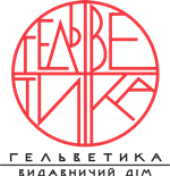SCULPTURE IN THE SOCIOCULTURAL SPACE AS A HAPTIC OBJECT OF PUBLIC ART
DOI:
https://doi.org/10.32782/uad.2023.4.10Keywords:
public art, plop art, haptics, deskilling, culture industry, cultural populism, retrocausality, sculpture of Ukraine.Abstract
The article examines the dichotomy of public art – plop art, manifested in the traditional garden and park landscape of the city as a contemporary sculpture, the formal structure of which is presented not by an abstract design episteme, but by the concept of «doubled presence» of haptics. The purpose of the article is to criticize the sculptural representation of the haptic episteme in the sociocultural public space as a phenomenon of cultural populism and deskilling. In the Ukrainian realities of martial law, when the processes of self-identification of nations intensified, scientists, critics and artists are trying to find updated paradigms and art epistemes adequate to modern challenges, in particular for the full reconstruction of Ukraine, whose victory in the Russian-Ukrainian war does not cause any doubts. Therefore, in the conditions of the essential transformation of the «spatial memory network», artistic and culture-creating epistemes already need to be revised in order to overcome the destruction of the entropic vectors of postculture development. Conclusions. Critical positions condemning cultural populism, which adheres to benchmarking strategies, are being expressed more and more boldly in the world scientific discourse. The art-episteme dichotomy testifies to the rethinking of the narrative of contemporary art, to the efforts of passionate artists and scientists to free themselves from the repressive pressure of the aesthetics of globalism, which today strengthens the negative influence of the market ideology of biocapitalism on the collective consciousness of nations, leading to the dominance of the philosophy of things, the reification of creative expression, and finally to professional deskilling. Therefore, the main duty of modern theories and practices is the rejection of spiritual materialism/nihilism, and vice versa – actualization according to the prognostic project of retrocausality of traditional ideals of transcendental aesthetics, which awakens in contemporaries an aisthesis «minimal soul» sensitive to subtle manifestations of the spirit.
References
Бодрійяр, Ж. (2010). Фатальні стратегії / Переклад з фр. Леоніда Кононовича. Львів: Кальварія. https://shron1.chtyvo.org.ua/Jean_Baudrillard/Fatalni_stratehii.pdf
Лаб’як, І. (2023). Скандал із пишнотілою скульптурою у Львові: хвиля хейту та зрештою напад вандалів. ТСН.UA. 23 серпня. https://tsn.ua/ukrayina/skandal-iz-pishnotiloyu-skulpturoyu-u-lvovi-2396008.html
Платонова, А. (2023). Пітер Осборн: «Національну ідентичність слід шукати в майбутньому, а не в минулому». LB.ua. 17.02.2023. https://lb.ua/culture/2023/01/13/542239_piter_osborn_natsionalnu.html
Шкепу, Марія. (2020). Методологічна аморфність посткультурології та антиномія креативної культури. Мистецтвознавство України. Вип. 20, р. 121–130. https://doi.org/10.31500/2309-8155.20.2020.220931
Baudrillard, J. (1993). Symbolic Exchange and Death. London: Sage.
Egor Zigura. Colossus Holding the World. https://www.egorzigura.art/items/32
Epstein, M. (2006). Philosophy of the body. Aleteia.
Fenner, D. (2023). Gardens and Plasticity. Contemporary Aesthetics. Vol. 21. https://contempaesthetics.org/2023/01/15/gardens-and-plasticity/
Fiedler, L. (1969). Cross the Border – Close the Gap. Art & Popular Culture. URL: https://www.artandpopularculture.com/Cross_the_Border_%E2%80%94_Close_the_Gap
Foster, H. (2002). Design and Crime (And Other Diatribes). London; New York: Verso.
Hesmondhalgh, D., Pratt, A. (2005). Cultural industries and cultural policy. International Journal of Cultural Policy. London. 11 (1). https://doi.org/10.1080/10286630500067598
Leifer, M. S., Pusey, M. F. (2017). Is a time symmetric interpretation of quantum theory possible without retrocausality? Proceedings of The Royal Society A. 21 June. https://doi.org/10.1098/rspa.2016.0607
Lyotard, Jean-François. (1993). Anima Minima. In Moralités postmodernes. Paris: Galilée, р. 199–210.
McGuigan, J. (2011). From cultural populism to cool capitalism. Art & the Public Sphere. Vol. 1 (1), р. 7–18. https://doi.org/10.1386/aps.1.1.7_1
Plop art. https://en.wikipedia.org/wiki/Plop_art
Pushp, A. (2023). Retrocausality and Quantum Mechanics. Jul 18. Resonance Science Foundation. https://www.resonancescience.org/blog/retrocausality-and-quantum-mechanics?fbclid=IwAR3kDEoedH6nz
AlfHVM38WZHeENiFlSSdgycrXkH0jxWNypyTxmXzmfY1UA
Sculpture by the Sea. (2018). Exhibit Turns Australian Coastline Into an Open-Air Museum. Mu Boyan, Horizon, Bondi. https://mymodernmet.com/sculpture-by-the-sea-2018/ ; https://sculpturebythesea.com/gallery/
Serra, R., Foster, H. (2018). Conversations about Sculpture. Yale University Press.
Skjeie, Alyssum. (2015). James Wines: The Architect Who Turned Buildings Into Art. Carnegie Museum of Art. Stories. July 8. https://carnegieart.org/resource/james-wines-the-architect-who-turnedbuildings-into-art/
Sustainable peace manifesto. Never again 2.0. Executive Summary. https://sustainablepeacemanifesto.org/uk/
United Nations. Sustainable Development. Goal 11. Make cities and human settlements inclusive, safe, resilient and sustainable. https://sdgs.un.org/goals/goal11 ; https://sdgs.un.org/topics/sustainable-cities-andhuman-settlements
Vaccaro, Joan A. (2018). The quantum theory of time, the block universe, and human experience. Philosophical Transactions A. The Royal Society Publishing. https://doi.org/10.1098/rsta.2017.0316







